-
 Bitcoin
Bitcoin $116200
1.84% -
 Ethereum
Ethereum $3841
6.86% -
 XRP
XRP $3.070
4.25% -
 Tether USDt
Tether USDt $1.000
0.02% -
 BNB
BNB $774.4
1.72% -
 Solana
Solana $172.3
5.17% -
 USDC
USDC $0.9999
0.01% -
 Dogecoin
Dogecoin $0.2136
6.85% -
 TRON
TRON $0.3391
1.21% -
 Cardano
Cardano $0.7667
5.76% -
 Hyperliquid
Hyperliquid $39.10
4.30% -
 Sui
Sui $3.724
9.37% -
 Stellar
Stellar $0.4139
5.86% -
 Chainlink
Chainlink $17.35
6.09% -
 Bitcoin Cash
Bitcoin Cash $573.7
2.52% -
 Hedera
Hedera $0.2518
5.39% -
 Ethena USDe
Ethena USDe $1.001
0.02% -
 Avalanche
Avalanche $22.68
3.57% -
 Litecoin
Litecoin $120.4
3.89% -
 UNUS SED LEO
UNUS SED LEO $8.951
-0.40% -
 Toncoin
Toncoin $3.312
4.62% -
 Shiba Inu
Shiba Inu $0.00001263
4.23% -
 Uniswap
Uniswap $10.14
6.89% -
 Polkadot
Polkadot $3.778
5.04% -
 Dai
Dai $1.000
0.01% -
 Monero
Monero $276.9
-4.52% -
 Bitget Token
Bitget Token $4.394
1.57% -
 Cronos
Cronos $0.1475
6.05% -
 Pepe
Pepe $0.00001081
5.27% -
 Aave
Aave $274.5
7.59%
Bybit stop profit and stop loss settings? : Bybit order management skills
Bybit offers stop profit and stop loss orders for effective risk management; learn how to set them up and use them wisely to optimize your trading strategy.
May 28, 2025 at 01:08 am
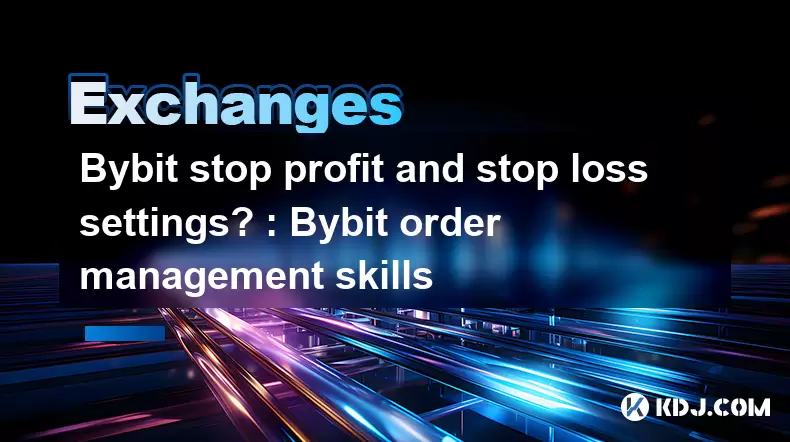
Bybit is a popular cryptocurrency trading platform that offers a variety of order types to help traders manage their positions effectively. Among these, stop profit and stop loss orders are crucial tools for risk management. This article will guide you through the process of setting up these orders on Bybit, as well as provide insights into their importance and how to use them effectively.
Understanding Stop Profit and Stop Loss Orders
Stop profit and stop loss orders are types of conditional orders that automatically execute trades when certain price levels are reached. A stop profit order, also known as a take profit order, is used to lock in profits by selling an asset when it reaches a predetermined higher price. Conversely, a stop loss order is designed to limit losses by selling an asset when it falls to a predetermined lower price.
These orders are essential for traders who cannot monitor their positions constantly, as they help automate the trading process and manage risk more effectively. By setting these orders, traders can ensure that they do not miss out on potential profits or suffer significant losses due to market volatility.
Setting Up a Stop Profit Order on Bybit
To set up a stop profit order on Bybit, follow these steps:
- Log into your Bybit account and navigate to the trading interface.
- Select the cryptocurrency pair you want to trade.
- Open a new position or select an existing one.
- Click on the "Trigger Order" tab located at the bottom of the order entry panel.
- Choose "Take Profit" from the dropdown menu.
- Enter the trigger price at which you want the order to be activated. This is the price at which you believe the asset will reach to lock in your profit.
- Set the order price if you want to specify a different price at which the order should be executed. If left blank, the order will be executed at the market price when the trigger price is reached.
- Enter the quantity of the asset you wish to sell.
- Review your order details and click "Place Order" to submit your stop profit order.
Setting Up a Stop Loss Order on Bybit
Setting up a stop loss order on Bybit involves a similar process:
- Log into your Bybit account and go to the trading interface.
- Choose the cryptocurrency pair you are trading.
- Select an open position or open a new one.
- Navigate to the "Trigger Order" tab at the bottom of the order entry panel.
- Select "Stop Loss" from the dropdown menu.
- Input the trigger price at which you want the stop loss order to be activated. This is the price at which you want to limit your losses.
- Set the order price if you prefer a different execution price. If not specified, the order will be executed at the market price when the trigger price is reached.
- Enter the quantity of the asset you want to sell.
- Confirm your order details and click "Place Order" to submit your stop loss order.
Managing and Adjusting Stop Profit and Stop Loss Orders
Once your stop profit and stop loss orders are placed, you can manage and adjust them as needed. Bybit allows you to modify these orders directly from the trading interface:
- Access the "Open Orders" tab to view all your active orders.
- Locate the stop profit or stop loss order you wish to adjust.
- Click on the order to open the modification panel.
- Adjust the trigger price, order price, or quantity as required.
- Confirm the changes and click "Modify Order" to update your order.
It's important to regularly review and adjust these orders based on market conditions and your trading strategy. This flexibility allows you to adapt to changing market dynamics and optimize your risk management.
Best Practices for Using Stop Profit and Stop Loss Orders
To maximize the effectiveness of stop profit and stop loss orders, consider the following best practices:
- Set realistic price levels: Ensure that your trigger prices are based on thorough market analysis and align with your trading goals.
- Use appropriate order sizes: Adjust the quantity of your orders to balance risk and reward according to your trading strategy.
- Monitor market volatility: Be aware of market conditions that may trigger your orders prematurely or cause slippage.
- Combine with other order types: Use stop profit and stop loss orders in conjunction with limit and market orders to create a comprehensive trading strategy.
By adhering to these practices, you can enhance your ability to manage risk and achieve consistent trading results.
Common Mistakes to Avoid
While stop profit and stop loss orders are powerful tools, they can be misused. Here are some common mistakes to avoid:
- Setting orders too close to the current price: This can result in frequent triggering of orders due to minor price fluctuations, leading to missed opportunities.
- Ignoring order execution: Failing to account for slippage and market gaps can result in orders being executed at less favorable prices.
- Neglecting to adjust orders: Failing to update stop profit and stop loss orders as market conditions change can lead to suboptimal outcomes.
- Over-reliance on automation: While these orders automate certain aspects of trading, they should not replace active market analysis and decision-making.
By being mindful of these pitfalls, you can use stop profit and stop loss orders more effectively and avoid common trading errors.
Frequently Asked Questions
Q: Can I set multiple stop profit and stop loss orders for the same position on Bybit?
A: Yes, Bybit allows you to set multiple stop profit and stop loss orders for the same position. This can be useful for implementing a tiered exit strategy, where you lock in profits at different price levels or limit losses at various thresholds.
Q: What happens if the market price gaps past my stop loss trigger price on Bybit?
A: If the market price gaps past your stop loss trigger price, Bybit will execute the order at the next available price. This is known as slippage, and it can result in the order being filled at a less favorable price than anticipated. It's important to consider potential slippage when setting your stop loss orders.
Q: How can I cancel a stop profit or stop loss order on Bybit?
A: To cancel a stop profit or stop loss order on Bybit, navigate to the "Open Orders" tab, locate the order you wish to cancel, and click on the "Cancel" button next to it. Confirm the cancellation, and the order will be removed from your active orders.
Q: Can I use stop profit and stop loss orders for futures trading on Bybit?
A: Yes, Bybit supports the use of stop profit and stop loss orders for futures trading. The process for setting up these orders is similar to spot trading, but you need to ensure you are in the futures trading interface when placing your orders.
Disclaimer:info@kdj.com
The information provided is not trading advice. kdj.com does not assume any responsibility for any investments made based on the information provided in this article. Cryptocurrencies are highly volatile and it is highly recommended that you invest with caution after thorough research!
If you believe that the content used on this website infringes your copyright, please contact us immediately (info@kdj.com) and we will delete it promptly.
- Ollama Turbo & GPT-OSS: Revolutionizing AI Model Accessibility and Speed
- 2025-08-07 20:29:33
- Bitcoin Ordinals: NFTs Evolving Bitcoin or a Fleeting Fad?
- 2025-08-07 20:29:33
- BlockchainFX, Bitcoin Swift, Crypto Presales: What's the Hype?
- 2025-08-07 19:10:13
- Pepe Dollar (PEPD) vs. SPX6900: The Meme Coin Battle of 2025
- 2025-08-07 19:50:12
- XRP Investment Regret: Are You Missing Out on the Next Big Thing?
- 2025-08-07 19:50:12
- XRPINU: More Than Just a Meme? Roadmap, Liquidity, and the Future of Funny Money
- 2025-08-07 19:56:46
Related knowledge

How to deposit USD on Bitstamp
Aug 07,2025 at 05:18pm
Understanding Bitstamp and USD DepositsBitstamp is one of the longest-standing cryptocurrency exchanges in the industry, offering users the ability to...
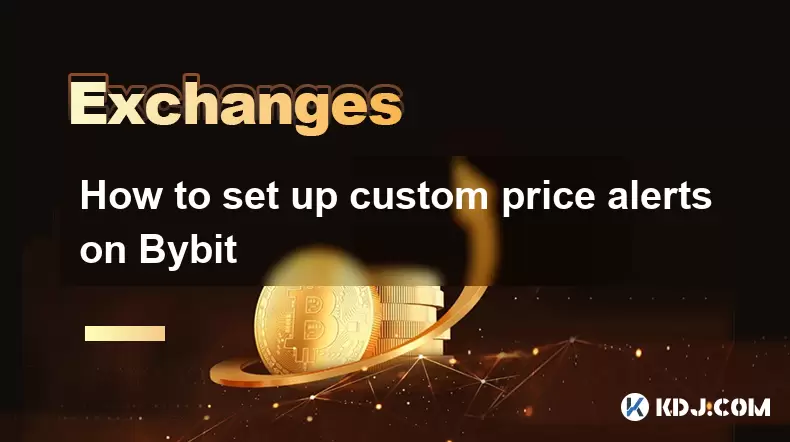
How to set up custom price alerts on Bybit
Aug 07,2025 at 04:31pm
Understanding Price Alerts on BybitPrice alerts on Bybit are essential tools for traders who want to stay informed about significant price movements i...
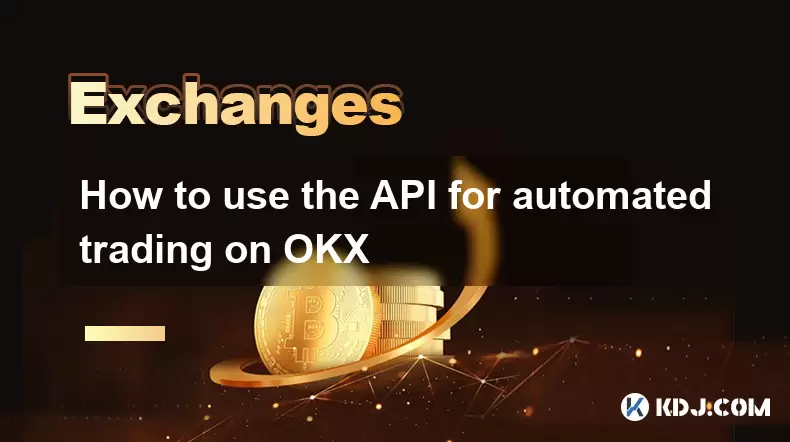
How to use the API for automated trading on OKX
Aug 07,2025 at 05:21pm
Understanding the OKX API for Automated TradingThe OKX API provides a powerful interface for users to automate their trading strategies, access real-t...

How to claim airdropped tokens on Gate.io
Aug 07,2025 at 04:01pm
Understanding Airdropped Tokens on Gate.ioAirdropped tokens are digital assets distributed for free by blockchain projects to promote awareness, incen...
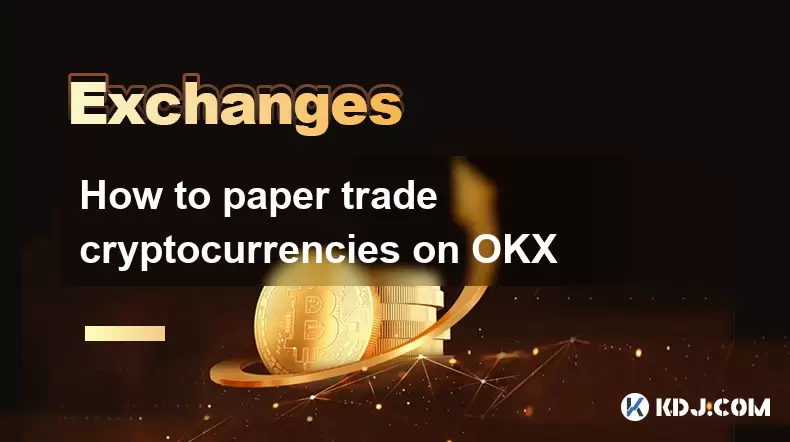
How to paper trade cryptocurrencies on OKX
Aug 07,2025 at 06:01pm
Understanding Paper Trading in the Cryptocurrency ContextPaper trading, also known as simulated or virtual trading, allows users to practice buying an...
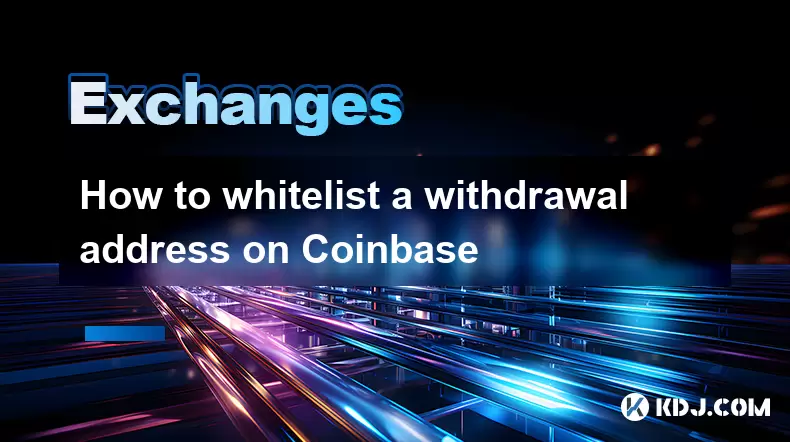
How to whitelist a withdrawal address on Coinbase
Aug 07,2025 at 07:28pm
Understanding Withdrawal Address Whitelisting on CoinbaseWhitelisting a withdrawal address on Coinbase enhances the security of your cryptocurrency ho...

How to deposit USD on Bitstamp
Aug 07,2025 at 05:18pm
Understanding Bitstamp and USD DepositsBitstamp is one of the longest-standing cryptocurrency exchanges in the industry, offering users the ability to...

How to set up custom price alerts on Bybit
Aug 07,2025 at 04:31pm
Understanding Price Alerts on BybitPrice alerts on Bybit are essential tools for traders who want to stay informed about significant price movements i...

How to use the API for automated trading on OKX
Aug 07,2025 at 05:21pm
Understanding the OKX API for Automated TradingThe OKX API provides a powerful interface for users to automate their trading strategies, access real-t...

How to claim airdropped tokens on Gate.io
Aug 07,2025 at 04:01pm
Understanding Airdropped Tokens on Gate.ioAirdropped tokens are digital assets distributed for free by blockchain projects to promote awareness, incen...

How to paper trade cryptocurrencies on OKX
Aug 07,2025 at 06:01pm
Understanding Paper Trading in the Cryptocurrency ContextPaper trading, also known as simulated or virtual trading, allows users to practice buying an...

How to whitelist a withdrawal address on Coinbase
Aug 07,2025 at 07:28pm
Understanding Withdrawal Address Whitelisting on CoinbaseWhitelisting a withdrawal address on Coinbase enhances the security of your cryptocurrency ho...
See all articles

























































































